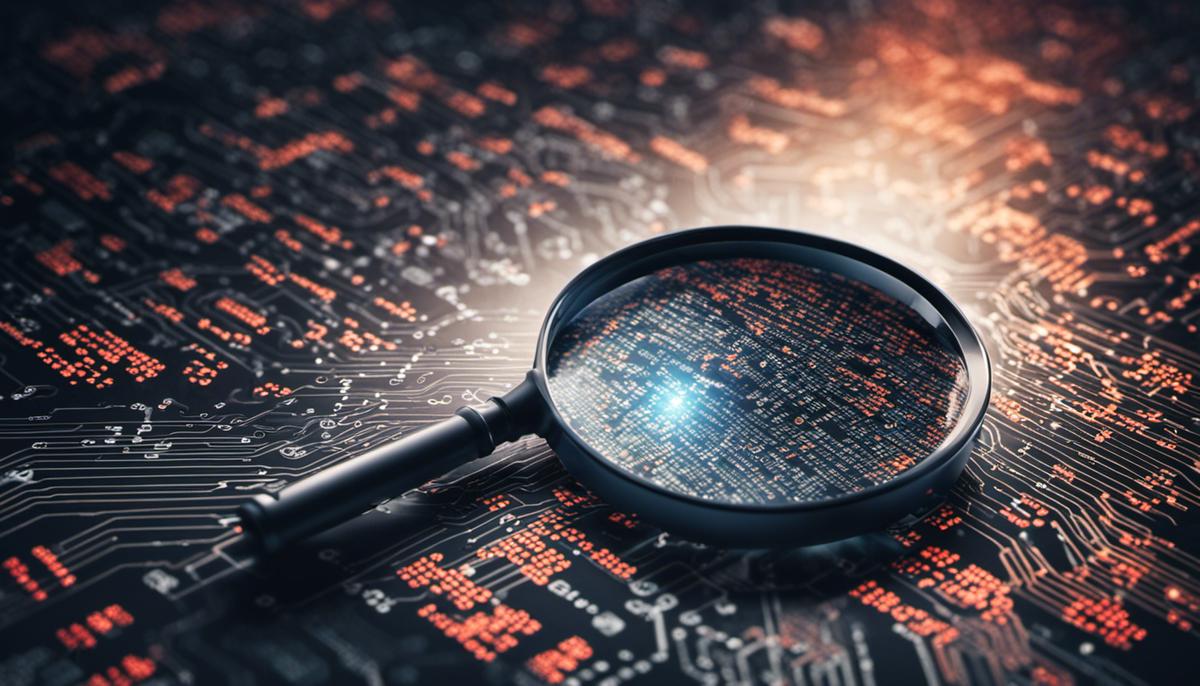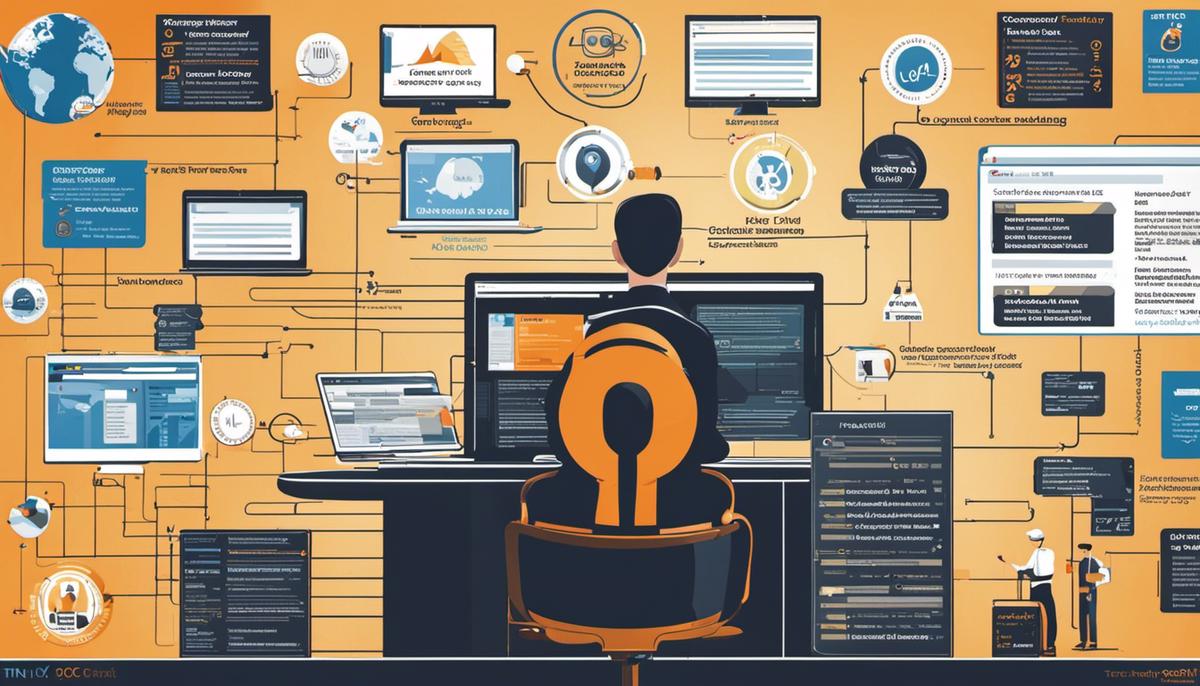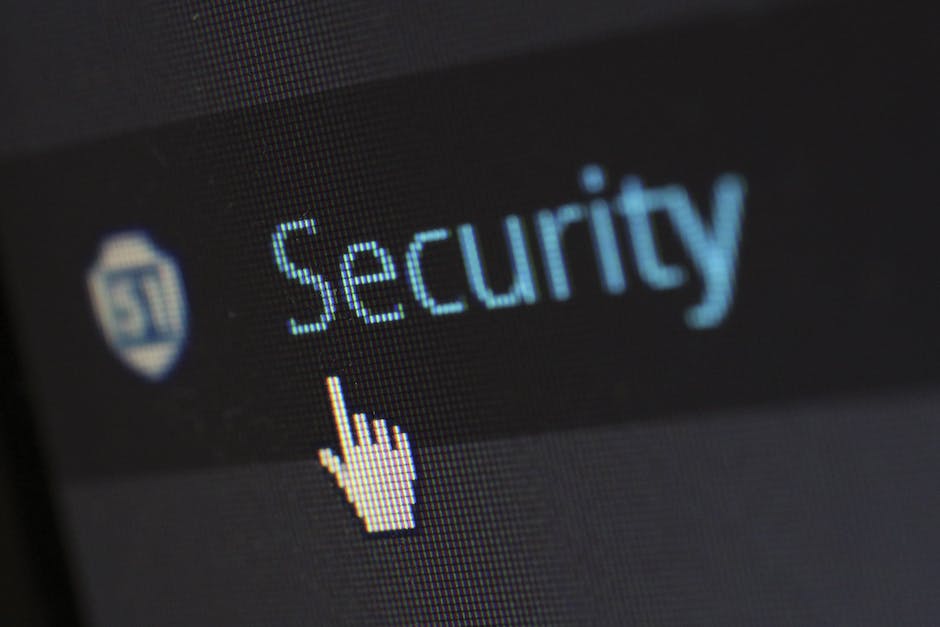In the relentless quest to effectively safeguard digital spaces, IOC cybersecurity serves as the beacon to navigate through the haze of potential cyber threats. The broad spectrum of IT security is littered with traces of system violation, which, when efficiently interpreted through IOCs such as IP addresses, domain names, URLs or codes, can offer a virtually impenetrable shield against cyber breaches. Quintessential to digital forensics, these IOCs form an integral component of a sturdy cybersecurity framework. Whether they’re system-centric IOCs like arbitrary firewall rules and software irregularities or network-specific like spear-phishing emails and cybersecurity attacks, understanding their types, mechanisms of detection and integration with futuristic technologies is vital.
Understanding IOC Cybersecurity
IOC: A Pivotal Component in Cybersecurity
In the rapidly evolving domain of cybersecurity, the concept of Indicators of Compromise (IOC) has emerged as a critical component. But what exactly is IOC, and why is it so significant in the information security landscape?
IOC refers to forensic data artifacts or clues that are identified on networks or systems that indicate potential security breaches. These indicators can be anything from peculiar network traffic patterns, irregular system processes, strange files, and even unusual registry changes. In a real-life analogy, an IOC is just like the DNA evidence or fingerprint left behind by a criminal at a crime scene, providing a trail to trace back to the culprit.
But why does this concept matter so much? Simply put, IOC makes proactive threat hunting possible. It empowers cybersecurity professionals to detect impending threats and malicious activities in their early stages before actual damage can be inflicted. By pinpointing these red flags, swift and decisive action can be taken to mitigate the potential risks. Without timely detection of IOCs, an organization could remain oblivious to a lurking threat within its network, leading to catastrophic security breaches.
The ability to identify and analyze IOCs is also the cornerstone of threat intelligence practices. Threat intelligence aids organizations in understanding the broader threat landscape and contributes to more robust, adaptable cybersecurity strategies. This information not only helps in identifying the types of attacks a system is vulnerable to but also who is likely to attack, how they might strike, and how often.
This understanding of potential threats through IOCs subsequently allows for the development of Indicators of Attacks (IOAs), which examine attacker tactics, techniques, and procedures, by correlating IOCs with IOAs, a comprehensive defensive strategy can be deployed, further reinforcing the cybersecurity infrastructure.
Delving deeper into advanced cybersecurity, IOCs play a critical role in the workings of Security Information and Event Management (SIEM) systems, a specialized software that centralizes logging and security event data. Recognizing IOCs in this varied data helps to filter out false positives and to pinpoint true security incidents.
As the rate of cyber-attacks escalates and their complexity increases, having the skills and tools to identify and respond to IOCs is more vital than ever. Therefore, an understanding of IOC is instrumental in not only combating threats in real time but also in shaping more proactive and resilient cybersecurity strategies for the future.
In conclusion, in the intricate dance between cybersecurity and potential threats, IOCs represent the footprints to trace, analyze, and counter maneuvers from the other side. It’s not just about putting out fires; it’s about understanding why and how the fire started and putting measures in place so it doesn’t rekindle.

Types and Detection of IOCs
Detecting Different Types of IOCs: Approaches and Methods
As technology continues to evolve at a rapid pace, so do the tools and methods used to identify cyber threats. One essential tool in our cybersecurity arsenal is the Indicators of Compromise (IOCs). Having established the importance of IOCs, it’s prudent to delve into the meaty topic of identifying different types of IOCs and the detection methods involved.
Various types of IOCs exist, including system-based, network-based, or host-based indicators. First, system-based IOCs, such as unapproved software, abrupt elevation in system privileges or unusual database read volume, can highlight potentially malicious activity. Similarly, network-based IOCs like irregular network traffic, DNS request anomalies, or recurring connection attempts signal cyber threats. Lastly, host-based IOCs, part of endpoint protection, include abnormal file modifications, unrecognized registry values, or unexpected scheduled tasks.
Now, armed with the knowledge of the types, let’s discuss the methodologies employed for detection. One such method is Signature-Based Detection, heavily leaning on threat intelligence. This method relies on known information about previous attacks and uses this to spot matches or similar futures in the system. While highly effective against known threats, it struggles with zero-day and advanced persistent threats (APTs).
In concert with signature-based detection, there’s Anomaly-Based Detection. It utilizes machine learning algorithms to create a baseline of ‘normal’ system activity. Any deviation from this ‘normal’ activity is flagged as a potential compromise. The challenge lies in establishing what is ‘normal’, as well as the high possibility of false positives.
A third method is Behaviour-Based Detection, which focuses on the action of the system or the user, rather than the identity. If unusual actions are detected, even from legitimate users or systems, an alert is triggered. Again, this method could potentially generate many false positives if not appropriately calibrated.
Complementing these automated detection strategies, there’s a manual method – Threat Hunting. It involves unique expertise and proactive searching through networks or systems to detect and isolate advanced threats missed by automated systems. Though this method can be labor and time-intensive, it allows for a deep-dive investigation and assurance.
In combination, these detection methods can cover the different types and complexities of IOCs while providing comprehensive protection. Nonetheless, the realm of cybersecurity is ever-evolving, and the strategies for detecting IOCs must keep pace. It’s crucial to continuously update and optimize detection techniques to stay ahead of the increasingly sophisticated cyber threats.
As such, technology adoption is not a choice but an inevitability for adapting to the ever-evolving cybersecurity landscape. To be perennially prepared and proactive, we must not only fully comprehend the function and importance of IOC but also stay updated with the emerging trends and tools for IOC detection. It’s a perpetual endeavor in the quest for a secure digital world.

Role of AI and automation in IOC detection and mitigation
With cyber threats presenting an ever-looming specter of risk, the application of artificial intelligence (AI) and automation technologies in the field of cybersecurity has hit the ground running. These revolutionary technologies have immensely broadened the scope for IOC detection, bringing about a dramatic perspective shift.
Arguably the biggest game-changer in this context is the introduction of AI to assist in the early detection of malware and other anomalies. AI leverages machine learning algorithms and a wealth of historical data to predict and identify potentially malicious behavior. This proactive engagement far exceeds the efficiency of reactive manual interventions.
Vigilance goes a step further with automation technology. Just think – no more frantic swimming against the torrent of alerts. Relying on manual, labor-intensive processes for IOC detection can lead to increased time-to-detection and a high rate of false positives. Not exactly efficiency-optimized. Instead, automation enables faster and more accurate detection of security incidents. This not only improves productivity by freeing up time for IT professionals to focus on more strategic issues but also strengthens the organization’s security posture.
Turning the lens on IOC mitigation, AI adopts an unabashedly aggressive stance. Sophisticated predictive capabilities allow AI to anticipate threat actors’ steps, enabling swift action to isolate and mitigate the impact. The tedious trial-and-error process? It’s in the rearview mirror.
Imagine the future of cybersecurity operations: A continuous stream of automated processes swiftly detecting IOCs, applying relevant mitigation measures, persistently monitoring the system for anomalies, and evolving their strategies based on learning. That’s the power of automation.
As an intriguing frontier, AI-driven automation offers Enhanced Threat Hunting models, integrating tactics like clustering, classification, association, and regression to detect anomalies and security gaps. This goes beyond the limits of manual efforts, drilling down into big data to uncover hidden threats. The result: Perceptibly diminished blind spots and improved counteractive decision-making.
The power couple, AI and automation, are also making strides with SOAR (Security Orchestration, Automation, and Response) systems. These systems equip security teams with a suite of integrated tools that automate and orchestrate responses to alerts, all while enabling stronger threat intelligence and incident response capacities. This innovation pushes past the traditional boundaries of SIEM systems, creating a holistic cybersecurity apparatus fortified against evolving threats.
However, harnessing the full potential of AI and automation technologies for IOC detection and mitigation requires measured steps. The imperatives include a deliberate focus on accuracy in the configuration of rules and filters and a commitment to constant fine-tuning.
In a world where cyber threats are escalating and evolving at breakneck speed, it is clear that artificial intelligence and automation aren’t just bells and whistles anymore. They are indispensable for detecting IOCs and apprehending elusive cyber criminals. By merging human intel with machine precision, the security landscape can gear up for a smarter, stealthier future.

Challenges and Future Growth of IOC Cybersecurity
Moving ahead with the congestion of ever-hyperconnected cyber landscapes, cybersecurity professionals face an intricate array of challenges with respect to IOC detection and mitigation. In fact, threat actors are evolving at an unprecedented rate, utilizing increasingly sophisticated methods that are slippery to trace and damaging upon impact. Their tactics frequently outpace the traditional methods of IOC detection, requiring cybersecurity to be two steps ahead at all times. But how can this seemingly insurmountable challenge be addressed?
Enter the transformative realm of artificial intelligence (AI) and automation. These two powerhouses are revolutionizing how we conceive cybersecurity and particularly, how we tackle IOC detection. AI is capable of scanning, identifying, and analyzing thousands of data points within seconds, a task that would take a human countless hours to achieve. This bionic capability allows for the early detection of threats and anomalies, making AI a critical tool for preventing potential breaches.
Parallelly, automation also holds a pivotal role in redefining the cyber terrain. It not only upscales efficiency but also eliminates the possibility of human error, a key factor in security breaches. Automation in IOC detection is becoming an industry standard due to its prowess in rapid and accurate incident response, which helps prevent potential attacks from escalating.
However, the path to automation and AI is fraught with its own set of challenges. As cybercriminals become more savvy, there’s an escalating concern that they might deceive AI systems or exploit automated processes. Thus, meticulously designed and regularly updated machine learning algorithms become instrumental to ensure the reliability of these systems.
Looking ahead, the vision of completely automated cybersecurity operations is not far off. Anticipate an AI-driven revolution that will enhance threat hunting capabilities and counteractive decision-making abilities. AI collaborative bot systems might dominate the cyber landscape, providing round-the-clock, lightning-fast threat detection and response.
Yet, it’s critical to remember that AI and automation tools should be utilized as a tandem force with human insight. While these tools promise massive potential, they cannot replace human intuition, experience, and judgment. Professionals specialized in cybersecurity will continue to lead the forefront in deciding the best strategies, responses, and practices in mitigating cyber threats while using AI and automation as a formidable arsenal in their toolkit.
In a nutshell, the future of IOC cybersecurity strides towards a more AI and automation-intensive landscape. This arena will pave the way for not only accelerated and accurate threat detection but also robust prevention strategies, forming a reliable shield against the cyber-attacks of tomorrow. It’s a whole new frontier, and an intriguing one at that.
Will we ever reach a point where cyber threats fail to penetrate this shield? That, readers, is a thrilling conversation for another day.

The world of IOC Cybersecurity, while offering a formidable defense against cyber threats, is not without its complexities. Striking the right balance between false positives and negatives, ensuring rapid responses, and combating advanced cyber threats pose significant challenges to professionals in the field. Yet, the future paints a hopeful picture, laden with intriguing advancements such as Predictive Analysis and Threat Intelligence Platforms. Poised to revolutionize cybersecurity, these up-and-coming innovations beckon a future where cyber threats are matched with even more potent, proactive remedies. As we venture into this new era, it is our understanding and utilization of IOCs that will determine the successes of our endeavors in cybersecurity, thus underscoring their indispensable role in shaping a safer digital world.